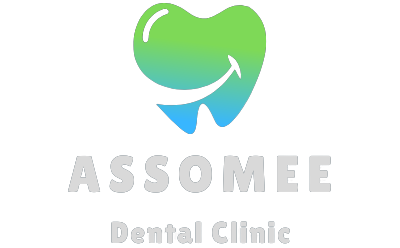Glaucoma, a silent thief of vision, affects millions of people worldwide. This insidious eye condition can gradually impair vision and, if left untreated, lead to permanent blindness. It is crucial to understand the symptoms, diagnosis, and causes of glaucoma to detect and manage it effectively. In this article, we will delve into the various aspects of glaucoma, including its symptoms, diagnostic methods, and underlying causes. Additionally, we will explore the innovative treatments available to combat this condition and discuss how lifestyle changes and early detection can play a significant role in preventing its onset.
1. Understanding Glaucoma: Symptoms, Diagnosis, and Causes
Glaucoma is a group of eye conditions that can cause irreversible damage to the optic nerve, leading to vision loss or blindness if left untreated. It is often referred to as the "silent thief of sight" because it progresses slowly and does not usually present noticeable symptoms in its early stages. Therefore, understanding the symptoms, diagnosis, and causes of glaucoma is crucial for early detection and effective treatment.
Symptoms of glaucoma may vary depending on the type and stage of the condition. In most cases, individuals with glaucoma experience gradual peripheral vision loss, which may go unnoticed until it reaches an advanced stage. Other symptoms may include blurred vision, the appearance of halos around lights, eye redness, severe eye pain, nausea, and vomiting. However, it is important to note that not everyone with glaucoma experiences symptoms, especially in the early stages.
To diagnose glaucoma, various tests are performed by an ophthalmologist or optometrist. The most common test is tonometry, which measures the pressure inside the eye. High intraocular pressure is a significant risk factor for glaucoma, but it does not necessarily mean that a person has the condition. Other diagnostic tests include visual field testing to assess peripheral vision, optic nerve examination, and measurement of corneal thickness. Regular eye exams are crucial for early detection and timely treatment.
The exact cause of glaucoma is not fully understood, but it is often associated with increased intraocular pressure. This pressure can damage the optic nerve
2. Exploring Glaucoma Treatments: Options and Innovations
Glaucoma, a group of eye conditions that can lead to vision loss and blindness, is a complex disease that requires careful management and treatment. While there is currently no cure for glaucoma, various treatment options are available to slow down the progression of the disease, alleviate symptoms, and prevent further damage to the optic nerve.
The treatment approach for glaucoma largely depends on the type and severity of the condition, as well as the patient’s overall health and individual circumstances. In most cases, treatment aims to lower the intraocular pressure (IOP) within the eye, as elevated IOP is a major risk factor for glaucoma progression.
One of the most common treatment options for glaucoma is the use of eye drops. These medications work by either reducing the production of fluid in the eye or improving its drainage. Prostaglandin analogs, beta blockers, alpha agonists, and carbonic anhydrase inhibitors are some of the commonly prescribed eye drops. It is crucial for patients to follow the prescribed dosage and administration instructions to ensure optimal effectiveness.
In addition to eye drops, there are other treatment methods available for glaucoma. Laser therapy is often used as a primary or secondary treatment option. Laser trabeculoplasty, for instance, helps to increase the drainage of fluid from the eye by targeting the trabecular meshwork. This procedure is typically performed in an outpatient setting and has shown to be effective in reducing IOP in many patients.
Another innovative treatment option for glaucoma
3. Preventing Glaucoma: Lifestyle Changes and Early Detection
Preventing Glaucoma: Lifestyle Changes and Early Detection
While there is no guaranteed way to prevent glaucoma, certain lifestyle changes and early detection can significantly reduce the risk of developing the condition or slow its progression. Here are some important steps individuals can take to protect their vision and maintain eye health.
1. Regular Eye Exams: The importance of regular eye exams cannot be emphasized enough. Routine eye examinations allow optometrists and ophthalmologists to detect early signs of glaucoma or other eye diseases before they cause irreversible damage. Adults should have a comprehensive eye exam at least once every two years, while individuals above the age of 40 or those with risk factors should get their eyes checked annually.
2. Know Your Risk Factors: Being aware of the risk factors associated with glaucoma can help individuals take proactive measures to prevent or manage the condition. Age, family history of glaucoma, medical conditions such as diabetes or high blood pressure, and certain ethnic backgrounds (African, Hispanic, or Asian descent) are some of the common risk factors. If you fall into any of these categories, it is advisable to be more vigilant about regular eye exams and maintain a healthy lifestyle.
3. Maintain a Healthy Lifestyle: Adopting a healthy lifestyle not only promotes overall well-being but also contributes to good eye health. Some lifestyle changes that may help prevent glaucoma include:
a. Regular Exercise: Engaging in moderate physical activities such as walking, jogging, or swimming can improve blood flow throughout the body
